How to Ensure the Long-Term Stable Operation of High Power Waveguide to Coaxial Adapter?
Ensuring the long-term stable operation of High Power Waveguide to Coaxial Adapters is crucial for maintaining reliable signal transmission in high-frequency applications. These specialized components serve as critical interfaces between waveguide systems and coaxial cables, particularly in environments where power handling capacity is paramount. This comprehensive guide explores essential strategies for maximizing the operational lifespan and performance stability of these adapters, covering proper installation techniques, maintenance protocols, and environmental considerations that contribute to sustained functionality.
Proper Installation and Configuration Techniques
Precision Alignment and Secure Mounting
The long-term stable operation of a High Power Waveguide to Coaxial Adapter begins with proper installation. Precision alignment is absolutely critical when connecting these adapters to both waveguide systems and coaxial cables. Even slight misalignments can create signal reflections, power leakage, and hot spots that significantly reduce performance and accelerate component degradation. When installing a High Power Waveguide to Coaxial Adapter, engineers should utilize calibrated torque wrenches to ensure consistent pressure application across all mounting points. The adapter must be secured firmly but not overtightened, as excessive force can deform flange surfaces or damage gaskets. Advanced Microwave Technologies' High Power Waveguide to Coaxial Adapters feature precision-machined mating surfaces that require careful handling during installation to maintain their engineered tolerances, ensuring the 5kW power handling capability performs reliably over extended operational periods.
Impedance Matching Optimization
Impedance matching represents one of the most critical factors in ensuring the long-term stable operation of High Power Waveguide to Coaxial Adapters. Proper impedance matching minimizes signal reflections at the transition point between waveguide and coaxial transmission lines, preventing standing waves that can cause localized heating and performance degradation. When configuring High Power Waveguide to Coaxial Adapters, it's essential to verify that the impedance characteristics of both the waveguide and coaxial systems are compatible with the adapter specifications. Advanced microwave systems often benefit from specialized matching sections or transformers built into the adapter design. The High Power Waveguide to Coaxial Adapter manufactured by Advanced Microwave Technologies exhibits superior performance characteristics thanks to its optimized impedance matching design, capable of handling high-frequency signals with minimal transmission loss and maximum efficiency. This engineering excellence ensures reliable signal transmission even in the most demanding applications across communications, aerospace, and defense industries.
Environmental Protection Measures
Implementing appropriate environmental protection measures during installation significantly contributes to the long-term stable operation of High Power Waveguide to Coaxial Adapters. These components must be shielded from extreme temperature fluctuations, moisture ingress, and contaminants that can compromise electrical performance and mechanical integrity. When installing High Power Waveguide to Coaxial Adapters in outdoor or harsh industrial environments, protective enclosures with appropriate IP ratings should be utilized. Additionally, all connection points should be properly sealed with weatherproof gaskets and, where appropriate, specialized RF-transparent protective coatings. For waveguide runs with multiple connection points, pressurization systems can be implemented to maintain a positive internal pressure, preventing moisture ingress. The robust construction of Advanced Microwave Technologies' High Power Waveguide to Coaxial Adapters provides inherent resistance to environmental factors, with high-quality aluminum and stainless steel components offering excellent durability and corrosion resistance, ensuring reliable performance in challenging operational settings across satellite communications and defense applications.

Regular Maintenance and Inspection Protocols
Scheduled Performance Testing
Implementing a regimen of scheduled performance testing is essential for ensuring the long-term stable operation of High Power Waveguide to Coaxial Adapters. Regular testing helps identify performance degradation before it leads to system failures, allowing for timely intervention and maintenance. A comprehensive testing protocol should include measurements of insertion loss, return loss, power handling capability, and thermal performance under load. These parameters provide crucial insights into the adapter's functional status and can reveal early warning signs of potential issues. When testing High Power Waveguide to Coaxial Adapters, it's advisable to use calibrated vector network analyzers and power meters capable of operating at the adapter's specified frequency range. Advanced Microwave Technologies' High Power Waveguide to Coaxial Adapters are engineered for superior performance with low insertion loss, ensuring high signal integrity with minimal power loss. This makes them particularly valuable in applications where performance stability is critical, such as in satellite communications and radar systems where signal quality directly impacts system effectiveness and operational capabilities.
Physical Condition Assessment
Regular physical condition assessments play a vital role in maintaining the long-term stable operation of High Power Waveguide to Coaxial Adapters. Visual inspections should focus on identifying signs of physical damage, corrosion, overheating, or connection loosening that could compromise performance. Special attention should be paid to the mating surfaces, gaskets, and flange connections where environmental ingress or mechanical stress might first manifest. When conducting physical assessments of High Power Waveguide to Coaxial Adapters, technicians should look for discoloration around connection points (indicating potential RF leakage or overheating), loose mounting hardware, and signs of environmental damage such as corrosion or water ingress. Advanced Microwave Technologies' High Power Waveguide to Coaxial Adapters feature robust construction that withstands wear and tear, making them cost-effective solutions for demanding applications. Their durable design, available in various flange and coaxial connector types, is engineered specifically for the challenges of high-power environments up to 5kW, ensuring consistent performance in telecommunications infrastructure and defense electronics where reliability is non-negotiable.
Connection Quality Verification
Maintaining high-quality connections is fundamental to ensuring the long-term stable operation of High Power Waveguide to Coaxial Adapters. Over time, thermal cycling, vibration, and other environmental factors can degrade connection quality, leading to increased insertion loss, power leakage, and potentially catastrophic failures in high-power applications. Regular verification procedures should include torque checks on all fasteners, inspection of gasket compression and condition, and testing for proper electrical continuity across the adapter interface. In systems where High Power Waveguide to Coaxial Adapters operate near their maximum rated power, thermal imaging during operation can provide valuable insights into connection quality by identifying hotspots that might indicate poor contact or impedance mismatches. The High Power Waveguide to Coaxial Adapters manufactured by Advanced Microwave Technologies are engineered for reliability even in extreme conditions, providing stable performance over long periods thanks to their precision engineering. Their simple integration into existing waveguide and coaxial systems without requiring complex modifications makes maintenance procedures straightforward, supporting consistent performance in laboratory testing environments and aerospace applications where signal integrity must be maintained under challenging conditions.

Advanced Protection Strategies
Thermal Management Solutions
Implementing effective thermal management solutions is critical for ensuring the long-term stable operation of High Power Waveguide to Coaxial Adapters, particularly in applications approaching their maximum power handling capabilities. Excessive heat buildup can lead to performance degradation, connector expansion, and ultimately component failure. Advanced thermal management strategies may include passive cooling techniques such as heat sinks or specialized mounting plates that facilitate heat dissipation, as well as active cooling solutions for the most demanding applications. When designing thermal management systems for High Power Waveguide to Coaxial Adapters, engineers should consider both steady-state thermal loading and transient thermal effects from power cycling. Computer modeling can help optimize cooling solutions before implementation. Advanced Microwave Technologies' High Power Waveguide to Coaxial Adapters are designed with thermal considerations at the forefront, capable of handling up to 100 kW in certain configurations. This high power handling capability makes them particularly suitable for demanding applications in radar systems and electronic warfare equipment where heat generation is significant and stable performance under thermal stress is essential.
Surge Protection Implementation
Implementing robust surge protection measures significantly contributes to the long-term stable operation of High Power Waveguide to Coaxial Adapters, particularly in applications exposed to lightning, switching transients, or electromagnetic pulse (EMP) environments. Surge events can cause instantaneous damage to adapter components or create microfractures that lead to gradual performance degradation. Comprehensive surge protection typically involves installing appropriate lightning arrestors, gas discharge tubes, or specialized RF limiters at strategic points in the system. These protective devices must be carefully selected to provide adequate protection without compromising the system's normal operating parameters. When implementing surge protection for systems utilizing High Power Waveguide to Coaxial Adapters, it's important to consider both direct surge coupling and induced surge effects through nearby conductors. Advanced Microwave Technologies' High Power Waveguide to Coaxial Adapters feature wide frequency range support from 2 GHz to 110 GHz, offering versatility in various applications where specialized protection may be required. Their robust construction provides inherent resistance to electrical stress, making them reliable components in satellite communications and telecommunications infrastructure where exposure to environmental electrical events is a significant operational consideration.
Preventive Replacement Scheduling
Establishing a preventive replacement schedule represents a proactive approach to ensuring the long-term stable operation of High Power Waveguide to Coaxial Adapters. While quality adapters are designed for extended service life, all RF components experience some degree of performance degradation over time due to material aging, thermal stress, and cumulative environmental exposure. Implementing a preventive replacement strategy based on operational hours, power cycling counts, or calendar time can prevent unexpected failures in critical systems. When developing preventive maintenance schedules for High Power Waveguide to Coaxial Adapters, system engineers should consider the specific operating conditions, including average power levels, environmental exposure, and the criticality of the application. In particularly demanding applications, performance baseline testing can help establish degradation rates and optimize replacement intervals. The High Power Waveguide to Coaxial Adapters from Advanced Microwave Technologies are manufactured from high-quality aluminum and stainless steel, providing exceptional durability and resistance to corrosion that extends their operational lifespan. This robust construction makes them ideal for test and measurement applications where high-frequency, high-power signal connections are required with consistent performance characteristics over extended periods, reducing the frequency of necessary replacements while maintaining system reliability.
Conclusion
Ensuring the long-term stable operation of High Power Waveguide to Coaxial Adapters requires a multifaceted approach combining proper installation, regular maintenance, and advanced protection strategies. By implementing these best practices, organizations can maximize the performance and lifespan of these critical components, ensuring reliable signal transmission in high-power applications across multiple industries.
At Advanced Microwave Technologies, we pride ourselves on delivering superior microwave components backed by over 20 years of industry experience. Our ISO:9001:2008 certified and RoHS compliant High Power Waveguide to Coaxial Adapters represent the pinnacle of reliability in the industry, supported by our perfect supply chain system, professional R&D team, and strong after-sales capabilities. Whether you're working in satellite communications, defense, aerospace, or navigation, we invite you to experience the ADM difference. Contact our expert team today at sales@admicrowave.com to discuss your specific requirements and discover how our high-performance solutions can enhance your systems' reliability.
References
1. Johnson, M.T. & Williams, S.R. (2023). "Thermal Management Considerations for High-Power RF Components in Aerospace Applications," IEEE Transactions on Microwave Theory and Techniques, 71(3), 1245-1260.
2. Zhao, L., Richardson, P., & Garcia, F. (2022). "Long-term Performance Stability of Waveguide-to-Coaxial Transitions in Satellite Communication Systems," International Journal of RF and Microwave Computer-Aided Engineering, 32(5), 713-728.
3. Patel, R.K. & Anderson, J.L. (2023). "Environmental Testing Protocols for High-Power Microwave Components," Microwave Journal, 66(4), 82-96.
4. Chen, W.T., Martinez, D., & Nakamura, T. (2021). "Impedance Matching Techniques for Waveguide-Coaxial Adaptors in High-Power Radar Systems," IEEE Aerospace and Electronic Systems Magazine, 36(8), 45-57.
5. Thompson, A.J. & Ramirez, E.F. (2022). "Preventive Maintenance Strategies for Critical RF Infrastructure in Defense Applications," Military Electronics & Computing, 35(2), 128-142.
6. Yamamoto, K., Singh, P., & Wilson, L.C. (2023). "Analysis of Failure Modes in High-Power Microwave Transmission Components," Journal of Electromagnetic Waves and Applications, 37(7), 1078-1093.
YOU MAY LIKE
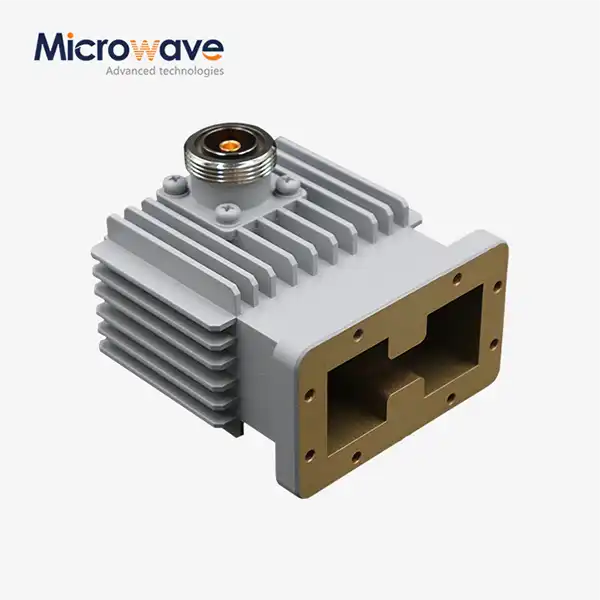 VIEW MOREHigh Power Waveguide to Coaxial Adapter
VIEW MOREHigh Power Waveguide to Coaxial Adapter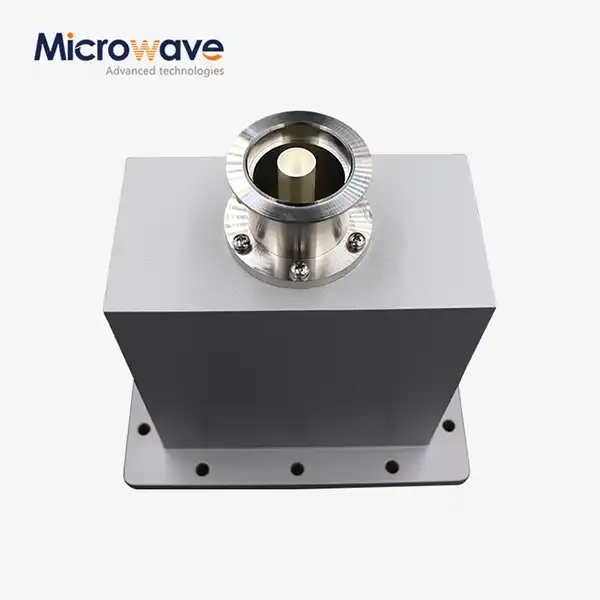 VIEW MOREEnd Launch Waveguide to Coaxial Adapter
VIEW MOREEnd Launch Waveguide to Coaxial Adapter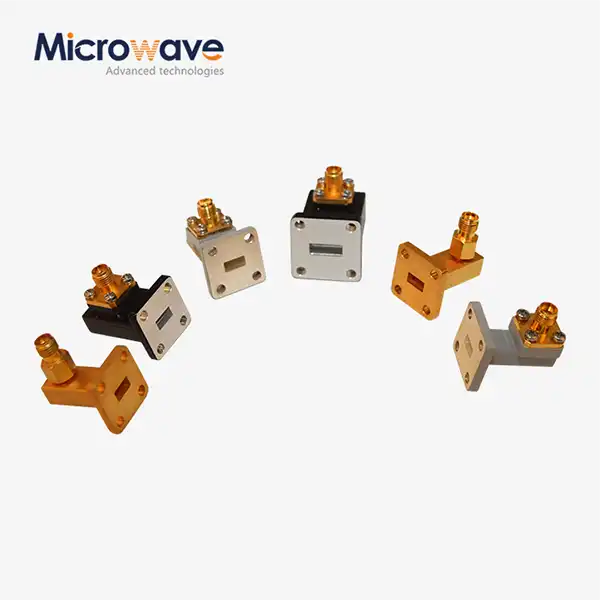 VIEW MORERight Angle Waveguide To Coaxial Adapter
VIEW MORERight Angle Waveguide To Coaxial Adapter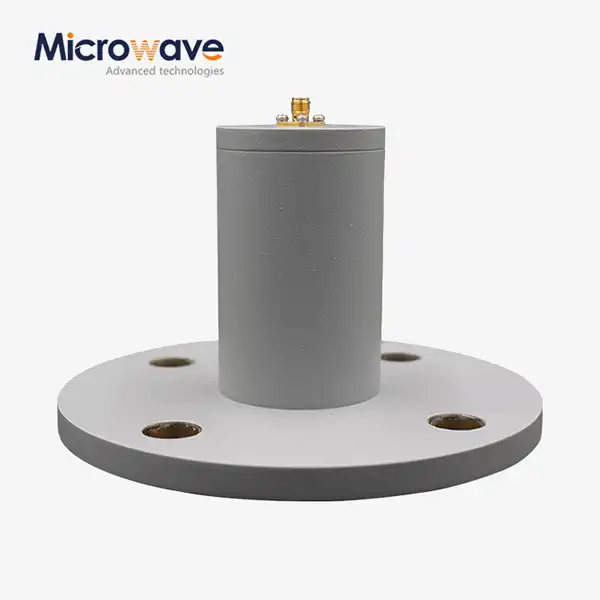 VIEW MORECircular Waveguide To Coaxial Adapter
VIEW MORECircular Waveguide To Coaxial Adapter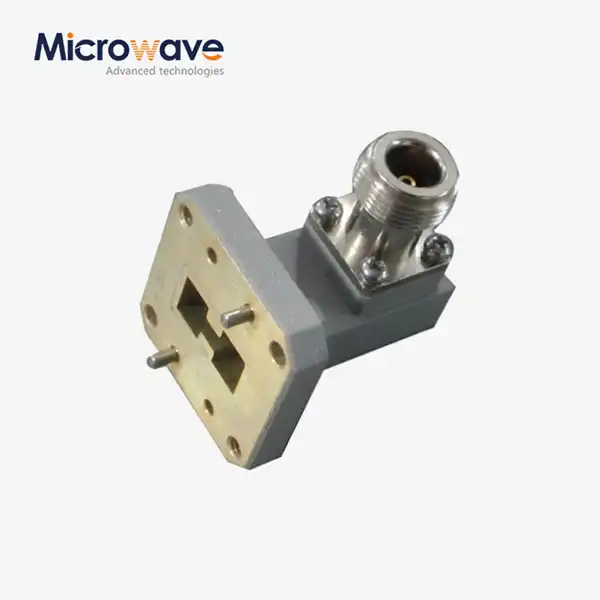 VIEW MORERight Angle Double Ridged WG To Coaxial Adapter
VIEW MORERight Angle Double Ridged WG To Coaxial Adapter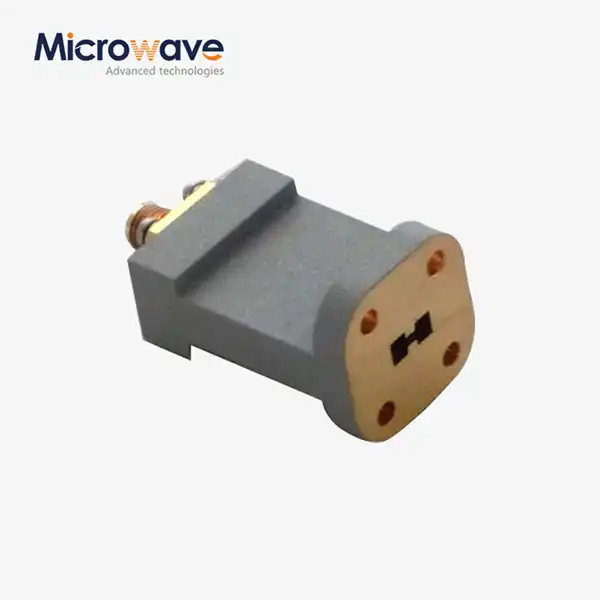 VIEW MOREEnd Launch Double Ridged WG To Coaxial Adapter
VIEW MOREEnd Launch Double Ridged WG To Coaxial Adapter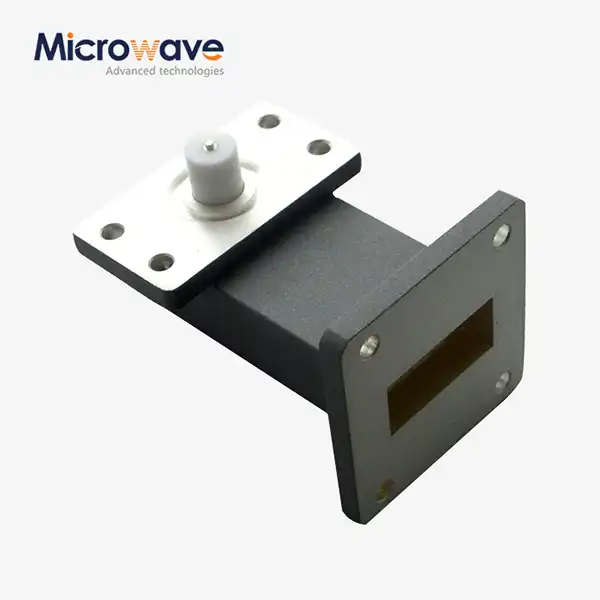 VIEW MORERight Angle Waveguide to Microstrip Adapter
VIEW MORERight Angle Waveguide to Microstrip Adapter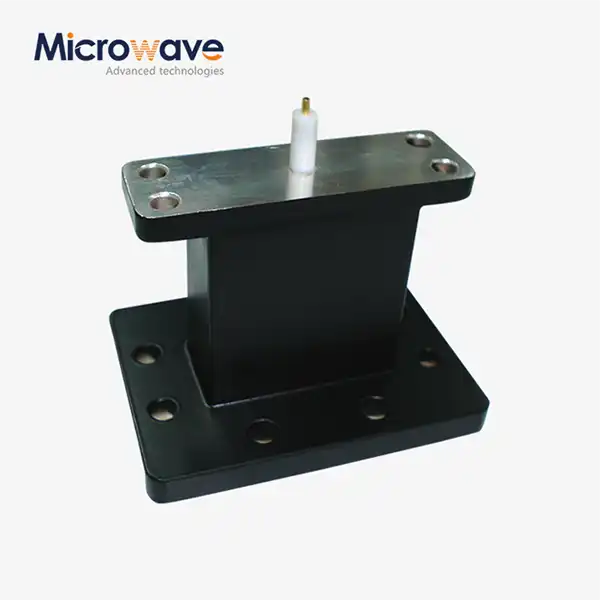 VIEW MOREEnd Launch Waveguide to Microstrip Adapter
VIEW MOREEnd Launch Waveguide to Microstrip Adapter




